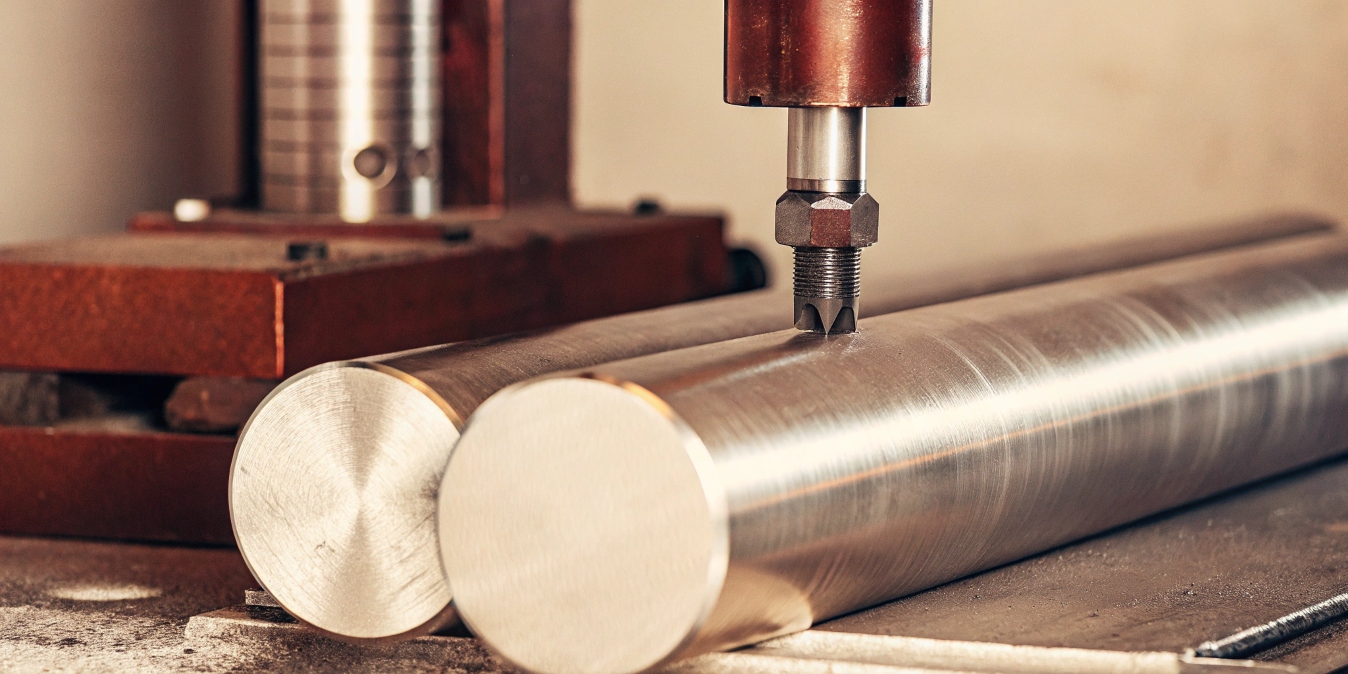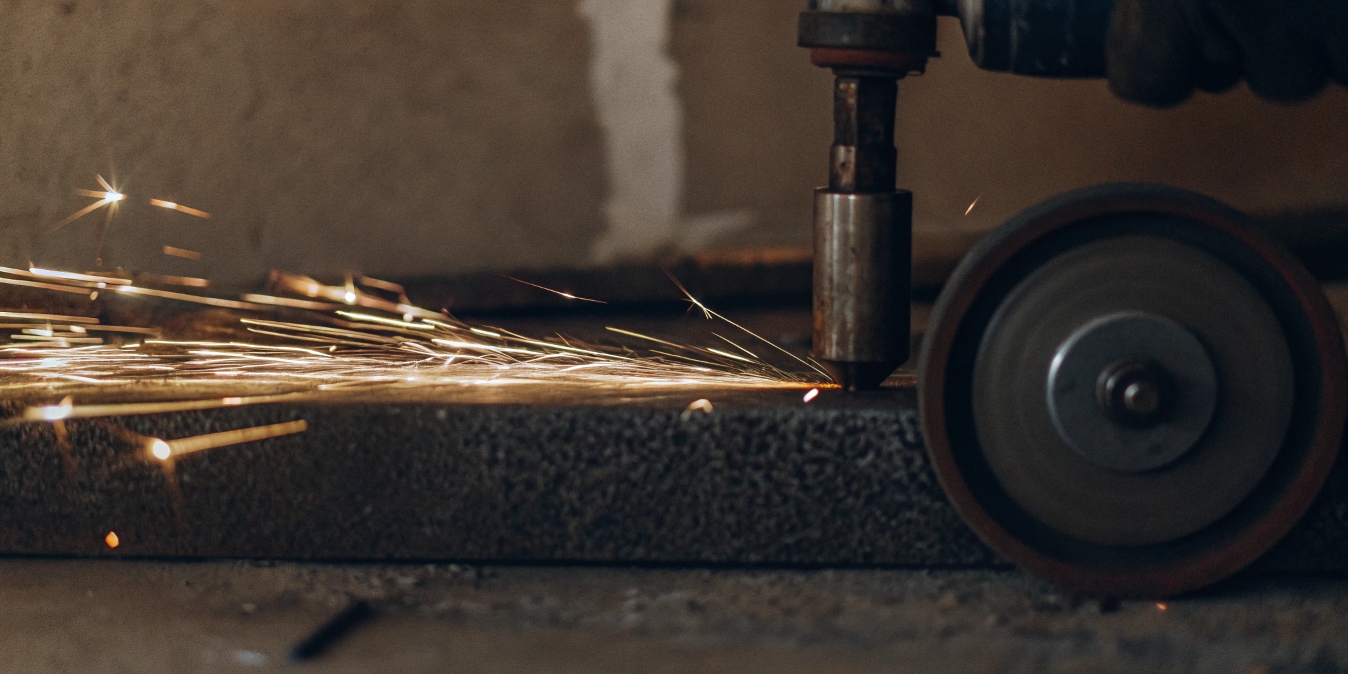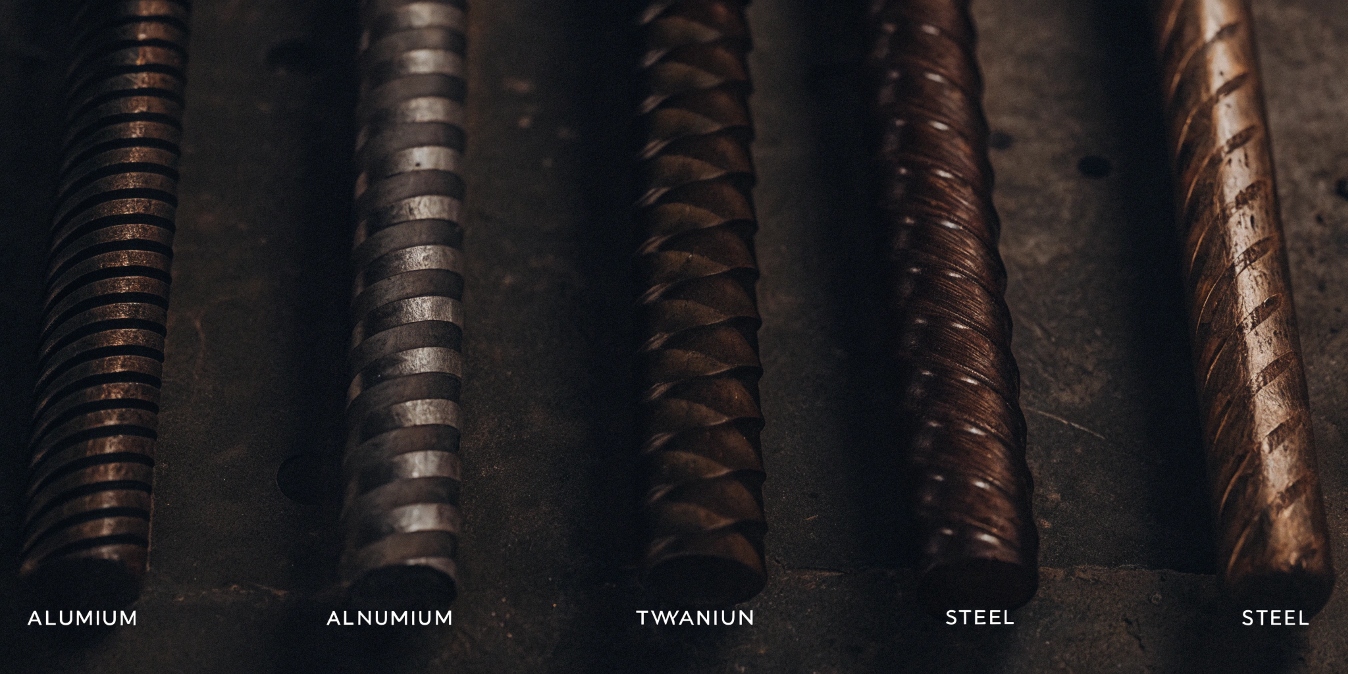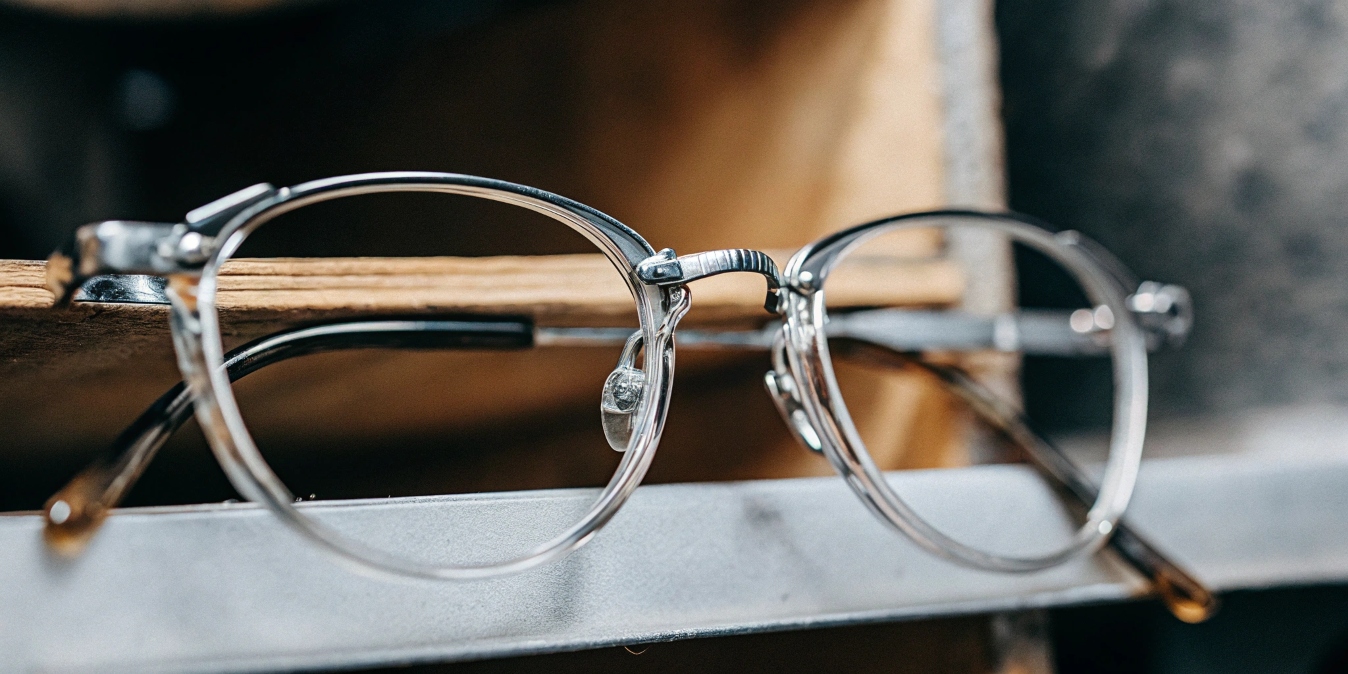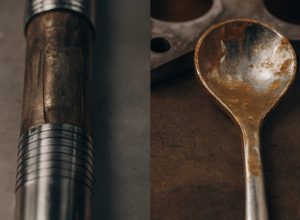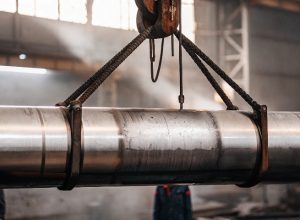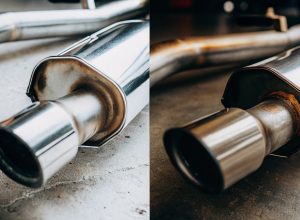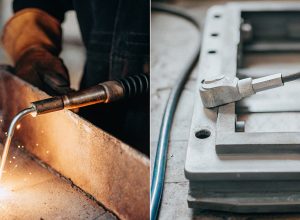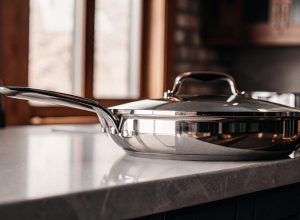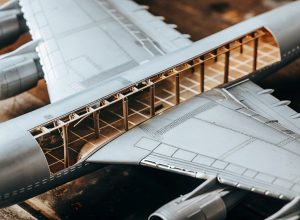Haben Sie Schwierigkeiten, die tatsächlichen Eigenschaften von Titan zu verstehen? Man hört, dass es unglaublich stark ist, aber dann sagt jemand, es sei weich. Diese Verwirrung kann zu teuren Fehlern bei der Auswahl von Materialien für Ihr Projekt führen.
Ja, handelsübliches Reintitan ist im Vergleich zu den meisten Stahllegierungen relativ weich. Seine Härte ist ähnlich wie die von geglühtem Edelstahl, aber viel härter als Aluminium. Diese "Weichheit" ist der Grund, warum es sich so leicht formen und schweißen lässt, was es ideal für nichtstrukturelle Anwendungen macht.
Diese Frage wird mir ständig gestellt, vor allem von neuen Kunden wie Ahmed, der in der Türkei ein Metallhandelsunternehmen betreibt. Er muss Materialien vorrätig haben, auf die sich seine Kunden verlassen können, und die gemischten Aussagen über die Härte von Titan können ihm wirklich Kopfschmerzen bereiten. Ist es stark wie ein Panzer, oder weich wie ein Ring? Die Antwort ist kein einfaches Ja oder Nein. Es kommt wirklich darauf an, womit man es vergleicht und ob es sich um reines Titan oder eine seiner vielen Legierungen handelt. Lassen Sie uns das aufschlüsseln, damit Sie jedes Mal die richtige Wahl treffen können.
Woran erkennt man, dass es sich um echtes Titan handelt?
Sind Sie besorgt, dass Sie kein echtes Titan erhalten? Ungeprüftes Metall kann die Integrität und Sicherheit Ihres Projekts beeinträchtigen. Das ist eine in der Branche weit verbreitete und berechtigte Angst.
Sie können echtes Titan mit ein paar einfachen Tests erkennen. Eine Funkenprüfung gegen eine Schleifscheibe erzeugt strahlend weiße Funken. Für mehr Genauigkeit kann eine Dichteprüfung oder eine professionelle Analyse mit einem Röntgenfluoreszenzspektrometer (XRF)1 ist der endgültige Beweis für seine Echtheit und seinen Rang.
In meinen 12 Jahren in der Titan-Lieferkette habe ich erlebt, wie einige Kunden durch gefälschte Materialien geschädigt wurden, bevor sie mit mir zusammenarbeiteten. Deshalb überprüfen wir unsere Bestände immer. Die erste und einfachste Prüfung ist der Funkentest. Wenn Sie Titan mit einer Schleifscheibe berühren, schießt es helle, weiße, kurze Funken ab. Stahl hingegen erzeugt lange, gelb-orangefarbene Funken. Das ist eine schnelle, grobe Methode, um sie zu unterscheiden.
Für eine genauere, zerstörungsfreie Prüfung verwenden wir eine XRF-Pistole. Dabei handelt es sich um ein tragbares Gerät, das in Sekundenschnelle die genaue Elementzusammensetzung des Metalls anzeigt. Auf diese Weise können wir nicht nur feststellen, ob es sich um Titan handelt, sondern auch, um welchen Grad es sich handelt. Wir können sofort feststellen, ob es sich um Reintitan Grad 2 oder eine Legierung Grad 5 handelt. Das ist der Goldstandard für die Materialprüfung.
Hier ist eine einfache Aufschlüsselung dessen, wonach wir suchen:
| Prüfverfahren | Reintitan Ergebnis | Gemeinsames Stahlergebnis |
|---|---|---|
| Funken-Test | Helle, strahlend weiße Funken | Lange, gelb/orangefarbene Funken |
| Dichte | ~4,5 g/cm³ (fühlt sich für seine Größe leicht an) | ~7,85 g/cm³ (fühlt sich spürbar schwerer an) |
| Magnetischer Test | Nicht-magnetisch | Gewöhnlich magnetisch (mit Ausnahme einiger rostfreier Stähle) |
| Farbe/Erscheinungsbild | Dunkel, silbrig-grau mit matter Oberfläche | Helleres Silber mit einer stärker reflektierenden Oberfläche |
Was sind die Nachteile von Reintitan?
Ziehen Sie Reintitan für ein Projekt in Betracht? Seine unglaubliche Korrosionsbeständigkeit könnte Sie über seine wirklichen Nachteile hinwegtäuschen. Wird es für die falsche Aufgabe verwendet, kann es leicht zum Ausfall von Teilen kommen.
Die Hauptnachteile von reinem Titan sind seine geringere Festigkeit und seine geringere Verschleißfestigkeit im Vergleich zu seinen Legierungen. Außerdem ist es teurer als Stahl. Diese Faktoren machen es ungeeignet für Anwendungen mit hoher Beanspruchung oder hoher Reibung, wo eine Legierung wie Grade 5 viel besser abschneiden würde.
Reines Titan ist zwar ein fantastisches Material, aber es ist kein Superheld. Seine größte Schwäche ist seine relativ geringe Zugfestigkeit und Härte. Das bedeutet, dass es nicht die beste Wahl für Teile ist, die schweren Lasten oder hoher Reibung standhalten müssen. Ich hatte einmal einen Kunden, der Reintitan Grad 2 für einen Satz kundenspezifischer Zahnräder verwenden wollte, weil es in einer Meeresumgebung korrosionsbeständig ist. Ich musste ihm davon abraten. Reines Titan ist anfällig für "Fressen", bei dem sich die Oberflächen festfressen und beschädigt werden, wenn sie aneinander reiben. Die Zahnräder hätten sehr schnell versagt.
Wir haben stattdessen Titan Grad 5 empfohlen. Grade 5 (Ti-6Al-4V) ist eine Legierung, die Aluminium und Vanadium enthält, was die Festigkeit und Härte drastisch erhöht. Die Korrosionsbeständigkeit bleibt größtenteils erhalten, aber das Verschleißproblem wird gelöst. Dies ist ein perfektes Beispiel für die Auswahl des richtigen Werkzeugs für die jeweilige Aufgabe.
Hier ist ein schneller Vergleich:
| Eigentum | Kommerzielles Reintitan (Grad 2) | Titanlegierung (Grad 5) |
|---|---|---|
| Zugfestigkeit | ~345 MPa | ~950 MPa |
| Härte (Brinell) | ~200 HB | ~334 HB |
| Am besten für | Chemische Verarbeitung, medizinische Implantate, Schiffsteile mit geringer Belastung | Luft- und Raumfahrt, Hochleistungsmotorenteile, Strukturkomponenten |
| Wichtigste Schwachstelle | Geringe Festigkeit, schlechte Verschleißfestigkeit | Höhere Kosten, schwieriger zu bearbeiten |
Ist Titan nun eigentlich hart oder weich?
Die Debatte darüber, ob Titan hart oder weich ist, ist verwirrend. Diese Verwirrung macht es schwierig, das richtige Material für Ihre Bedürfnisse auszuwählen, was Zeit und Geld kosten kann.
Reines Titan gilt als weich im Vergleich zu hochfesten Stählen, aber hart im Vergleich zu Aluminium. Seine Brinell-Härte beträgt etwa 200 HB. Titanlegierungen wie Grade 5 sind jedoch wesentlich härter und fester, weshalb es wichtig ist, zwischen Reintitan und seinen Legierungen zu unterscheiden.
Das ist der Kern des Problems. Wenn Menschen "Titan" sagen, können sie ein Dutzend verschiedene Dinge meinen. Aber in der Industrie gibt es eine klare Linie. "Reines Titan" (wie die Grade 1-4) ist weich. "Titanlegierungen" (wie Grad 5) sind hart. Stellen Sie sich das so vor: Reines Eisen ist weich, aber wenn Sie es durch Zugabe von Kohlenstoff in Stahl verwandeln, wird es hart und stark. Mit Titan verhält es sich genauso.
Wenn mein Kunde Ahmed Materialien für kleine Hersteller auf Lager hat, ist diese Unterscheidung von entscheidender Bedeutung. Ein Juwelier möchte vielleicht weiches, reines Titan, weil es sich leicht zu einem Ring formen lässt. Eine Maschinenwerkstatt für die Luft- und Raumfahrt benötigt eine harte Legierung der Güteklasse 5, um ein Fahrwerksteil herzustellen, das enormen Belastungen standhalten kann. Beides ist "Titan", aber ihre Eigenschaften sind sehr unterschiedlich. In unseren Verarbeitungsanlagen können wir die Härte von Reintitan durch Kaltumformung, die im Grunde die Struktur des Metalls verdichtet, sogar um etwa 30% erhöhen. Es wird zwar härter, erreicht aber nie das Niveau einer Legierung.
| Material | Härte (Brinell, HB - annähernd) | Fühlt sich an wie... |
|---|---|---|
| Aluminium (6061) | 95 HB | Sehr weich, leicht zu zerkratzen und zu verbiegen |
| Reintitan (Grad 2) | 200 HB | Härter als Aluminium, kann aber von Stahl zerkratzt werden |
| Baustahl | 120 HB | Weich für einen Stahl, sehr häufig |
| Gehärteter Stahl | 400-600 HB | Sehr hart, wird für Werkzeuge und Klingen verwendet |
| Titanlegierung (Grad 5) | 334 HB | Sehr hart und fest, schwer zu bearbeiten |
Ist Reintitan flexibel?
Benötigen Sie ein Material, das sich biegen und wieder in seine Form zurückkehren kann? Die Wahl eines zu starren oder zu schwachen Materials kann dazu führen, dass Ihre Teile unter Belastung versagen.
Ja, Reintitan hat eine gute Flexibilität. Sein niedriger Elastizitätsmodul2 (116 GPa) ermöglicht es ihm, sich unter Belastung zu verbiegen und ohne bleibende Schäden in seine ursprüngliche Form zurückzufallen. Diese Eigenschaft macht es zu einem hervorragenden Material für Anwendungen wie medizinische Knochenplatten und Brillengestelle.
Flexibilität, oder genauer gesagt, ein niedriger Elastizitätsmodul, ist eine der wertvollsten Eigenschaften von Reintitan. Ein hoher Elastizitätsmodul bedeutet, dass ein Material sehr steif ist, wie Keramik oder die meisten Stähle. Es bricht eher, als dass es sich sehr stark verbiegt. Ein niedriger Elastizitätsmodul bedeutet, dass sich das Material ziemlich stark biegen kann und dann wieder in seine ursprüngliche Form zurückkehrt. Titan befindet sich in einem idealen Bereich. Es ist etwa halb so steif wie Stahl, aber viel fester als Aluminium.
Aus diesem Grund ist es für medizinische Implantate so beliebt. Wenn ein Chirurg eine Titanplatte an einem Knochen anbringt, muss sie stark genug sein, um den Knochen zu stützen, aber auch flexibel genug, um sich mit der natürlichen Biegung des Körpers zu bewegen. Stahlplatten sind oft zu starr, was zu Problemen führen kann. Ich habe mit mehreren Medizintechnikunternehmen zusammengearbeitet, die sich genau aus diesem Grund für Reintitan entschieden haben. Es ahmt die Flexibilität des menschlichen Knochens besser nach als fast jedes andere Metall und ist dabei völlig ungiftig und resistent gegen Korrosion durch Körperflüssigkeiten. Es ist die perfekte Mischung aus Stärke und Nachgiebigkeit.
| Material | Elastizitätsmodul (GPa) | Flexibilitätsstufe |
|---|---|---|
| Aluminium | ~69 GPa | Sehr flexibel, aber schwach |
| Reines Titan | ~116 GPa | Guter Flex, starke Rückfederung, "Sweet Spot" |
| Stahl | ~200 GPa | Sehr steif, nicht sehr flexibel |
Schlussfolgerung
Reines Titan ist relativ weich, aber auch flexibel und hat eine hohe Korrosionsbeständigkeit. Für Anwendungen, die eine hohe Härte und Festigkeit erfordern, sind Titanlegierungen die weitaus bessere Wahl. Überprüfen Sie immer Ihr Material.

